[Editor's Note: Whitepaper submitted by GF Microlution Inc., Chicago. The company may be contacted via phone at (773) 282-6495, fax at (866) 417-4459 or on the web at www.microlution-inc.com. All images courtesy GF Microlution.]
A recent USA Today article, “Manufacturers bringing the most jobs back to America,” indicates a changing landscape for domestic manufacturing. More and more U.S.-based manufacturers are deciding to make products close to home as rising labor costs in Asia, higher global fuel/transportation costs, the natural gas boom here, and customer demands for quality create a playing field where U.S. companies can compete and win.
New Manufacturing Technologies
“The United States is in the early stages of a manufacturing renaissance,” according to CNBC, “and is expected to grow.” New manufacturing is different and is creating new jobs. “Research by economists shows technology has created more jobs than it's destroyed—and they have 140 years of data to prove it,” CNBC said. The trick for U.S. companies is to develop new manufacturing techniques ahead of global competitors and then use them to produce goods more efficiently on super automated factory floors.
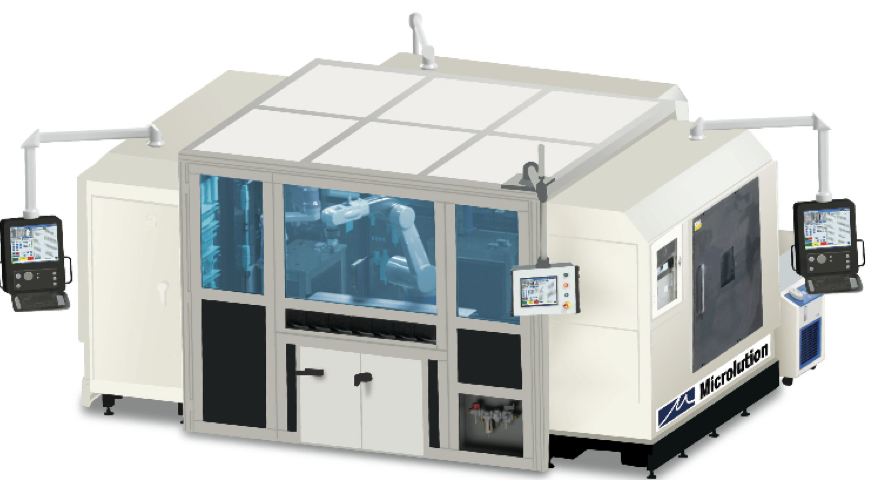
Writing in Tech Crunch, manufacturing executive Vicki Holt writes, “When most people hear the word ‘manufacturing,’ a few images tend to come to mind: low skill, wrench-turning, physically draining work; dirty, grease-stained workplaces; a male-dominated workforce. For whatever reason, these stereotypes persist, and they are antiquated and misleading.”
“Thanks to massive advancements in automation technology and analytics software,” she continues, “the American manufacturing industry of today is a far cry from the assembly lines and manual labor of the past. Manufacturing in the 21st century is a high-tech fusion of software and mechanical engineering, automated processes and complex production equipment, 3D CAD models, and on-demand parts.
Traditional Machining Losing its Edge
All this comes as traditional micro machining technology is running up against limitations of precision and productivity. Conventional micro machining methods are losing their edge. More and more micro machining applications require multiple post processing steps—such as lapping and grinding—to achieve single-digit micron quality results using conventional manufacturing methods.
At the same time, materials are evolving. Brittle materials, ultra hard metals, polymers, and other more complex and challenging materials have taken a much more prominent role in precision manufacturing, and their role will likely continue to grow for next-generation product advances.
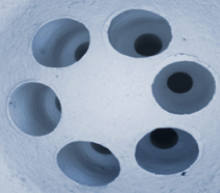 The Race to Small
The Race to Small
There is also a race to small. New product designs are requiring increasingly intricate features to enable new performance results. For example, new texturing inside of fuel injector holes is a potential solution to further optimize spray patterns for fuel injectors—this is not possible using traditional machining methods. Microfluidics channels must be machined to dimensions that allow them to separate different molecules into different channels. And coronary stents, made of both polymer and hard metals, must be machined to ensure structural integrity with struts less than 100 microns wide.
In the end, a new generation of machining technology is needed for the future of precision manufacturing.
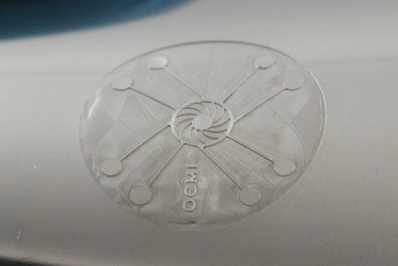
This is where companies like Microlution come in. Microlution’s advanced micro manufacturing technology is one of those new manufacturing techniques that makes new products possible, achieving the higher quality that end users demand faster, cleaner and ultimately at a lower cost than the more coarse technologies of the past. Many manufacturers developing next-generation production processes to make new products more efficiently are embracing this technology.
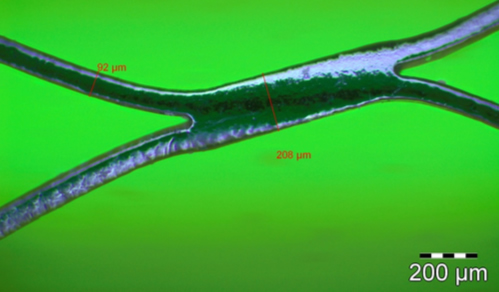
Faster, Cleaner, More Precise
These new solutions are faster, cleaner, and more precise, leading to higher yields through more accurate, repeatable machining. Ultrafast lasers that remove material at the molecular level, create finished parts in a single step with no melting, burring or recast, and no chemical postprocessing, are enabling manufacturers to make better products at a lower cost per part and to gain a competitive advantage in the process.
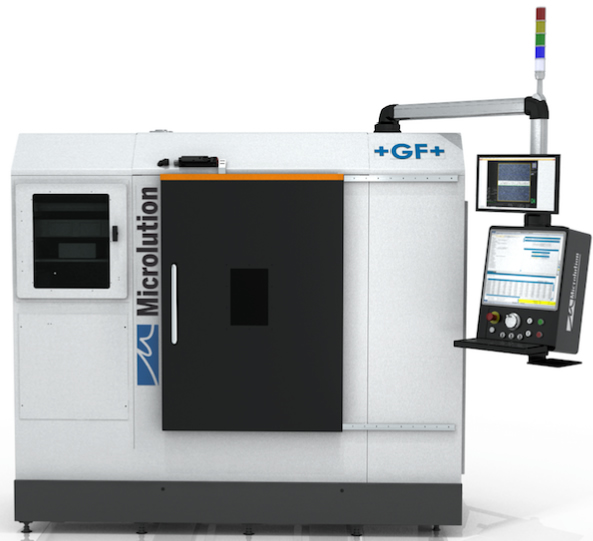
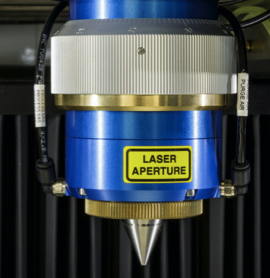 New mechanical milling and turning solution with g-force acceleration, high spindle speeds, and unprecedented stability also represent a new generation of manufacturing equipment that makes smaller parts better and faster.
New mechanical milling and turning solution with g-force acceleration, high spindle speeds, and unprecedented stability also represent a new generation of manufacturing equipment that makes smaller parts better and faster.
Sensor technology is also enabling more efficient production processes. Glass scales that give realtime positional feedback, laser sensors that measure accuracy in-situ and self-correcting software further improves yields and reduce cost per part.
Combine this high precision technology with manufacturing automation and you have highly efficient micro factories capable of machining parts 24/7, with unprecedented accuracy and repeatability.
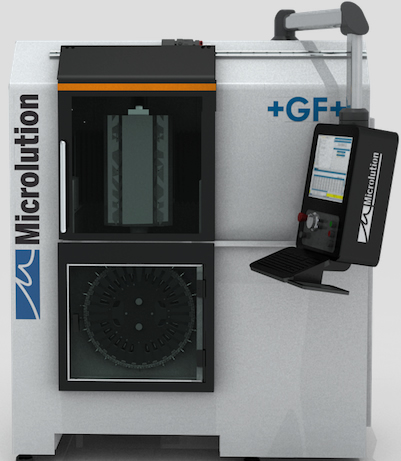
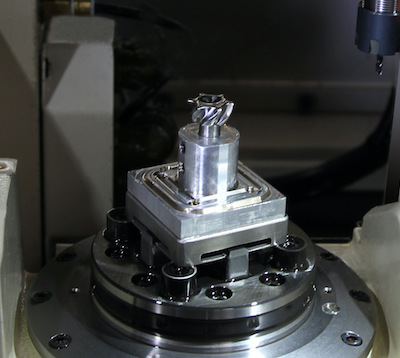 "The ability to make things is fundamental to the ability to innovate things over the long term," Willy Shih, a Harvard Business School professor and author of "Producing Prosperity: Why America Needs a Manufacturing Renaissance," tells the magazine. "When you give up making products, you lose a lot of added value."
"The ability to make things is fundamental to the ability to innovate things over the long term," Willy Shih, a Harvard Business School professor and author of "Producing Prosperity: Why America Needs a Manufacturing Renaissance," tells the magazine. "When you give up making products, you lose a lot of added value."
Enabling manufacturers to make things no one else can make delivers that value. That's part of the enormous promise of no next generation micro machining technology--achieving new levels of precision that enable companies to build valuable new products quickly and efficiently, opening the door to new industrial designs that couldn't be otherwise be realized, and offering a compelling competitive advantage to manufacturers in multiple sectors.
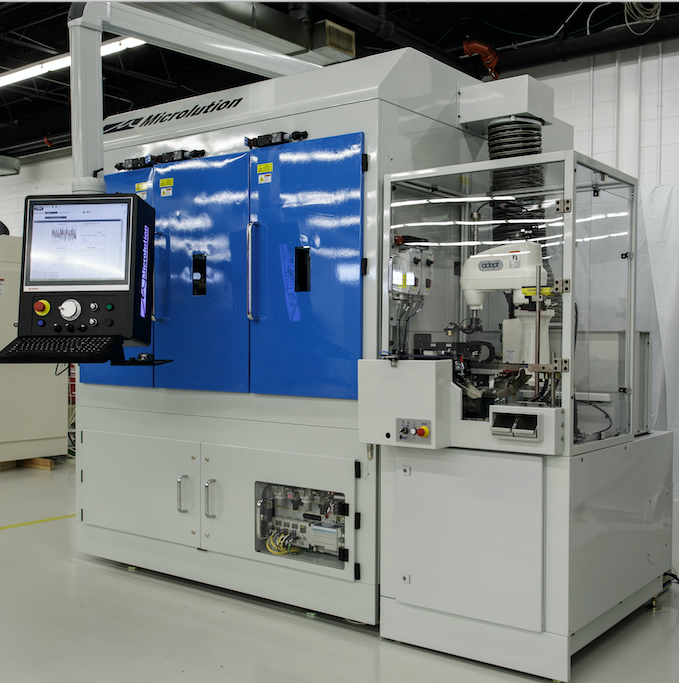
Microlution has pioneered a complete line of micro machining platforms optimized for high precision, small part fabrication. The company’s product line includes mechanical milling and turning stations as well as laser processing centers. All platforms utilize all the key features of a precision platform. Mechanical platforms include the 363-S 3-axis horizontal milling station, the 5100-S 3 or 5-axis vertical milling station, and the MR-4 4-axis micro lathe. The laser machines include the ML-5 5-axis ultrafast laser platform and the MLDS dual-station machining center that can be configured with as a mechanical, laser or hybrid platform.
To download a PDF version of this whitepaper, click here.
Related Glossary Terms
- centers
centers
Cone-shaped pins that support a workpiece by one or two ends during machining. The centers fit into holes drilled in the workpiece ends. Centers that turn with the workpiece are called “live” centers; those that do not are called “dead” centers.
- computer-aided design ( CAD)
computer-aided design ( CAD)
Product-design functions performed with the help of computers and special software.
- gang cutting ( milling)
gang cutting ( milling)
Machining with several cutters mounted on a single arbor, generally for simultaneous cutting.
- lapping
lapping
Finishing operation in which a loose, fine-grain abrasive in a liquid medium abrades material. Extremely accurate process that corrects minor shape imperfections, refines surface finishes and produces a close fit between mating surfaces.
- lathe
lathe
Turning machine capable of sawing, milling, grinding, gear-cutting, drilling, reaming, boring, threading, facing, chamfering, grooving, knurling, spinning, parting, necking, taper-cutting, and cam- and eccentric-cutting, as well as step- and straight-turning. Comes in a variety of forms, ranging from manual to semiautomatic to fully automatic, with major types being engine lathes, turning and contouring lathes, turret lathes and numerical-control lathes. The engine lathe consists of a headstock and spindle, tailstock, bed, carriage (complete with apron) and cross slides. Features include gear- (speed) and feed-selector levers, toolpost, compound rest, lead screw and reversing lead screw, threading dial and rapid-traverse lever. Special lathe types include through-the-spindle, camshaft and crankshaft, brake drum and rotor, spinning and gun-barrel machines. Toolroom and bench lathes are used for precision work; the former for tool-and-die work and similar tasks, the latter for small workpieces (instruments, watches), normally without a power feed. Models are typically designated according to their “swing,” or the largest-diameter workpiece that can be rotated; bed length, or the distance between centers; and horsepower generated. See turning machine.
- machining center
machining center
CNC machine tool capable of drilling, reaming, tapping, milling and boring. Normally comes with an automatic toolchanger. See automatic toolchanger.
- micron
micron
Measure of length that is equal to one-millionth of a meter.
- milling
milling
Machining operation in which metal or other material is removed by applying power to a rotating cutter. In vertical milling, the cutting tool is mounted vertically on the spindle. In horizontal milling, the cutting tool is mounted horizontally, either directly on the spindle or on an arbor. Horizontal milling is further broken down into conventional milling, where the cutter rotates opposite the direction of feed, or “up” into the workpiece; and climb milling, where the cutter rotates in the direction of feed, or “down” into the workpiece. Milling operations include plane or surface milling, endmilling, facemilling, angle milling, form milling and profiling.
- turning
turning
Workpiece is held in a chuck, mounted on a face plate or secured between centers and rotated while a cutting tool, normally a single-point tool, is fed into it along its periphery or across its end or face. Takes the form of straight turning (cutting along the periphery of the workpiece); taper turning (creating a taper); step turning (turning different-size diameters on the same work); chamfering (beveling an edge or shoulder); facing (cutting on an end); turning threads (usually external but can be internal); roughing (high-volume metal removal); and finishing (final light cuts). Performed on lathes, turning centers, chucking machines, automatic screw machines and similar machines.
- web
web
On a rotating tool, the portion of the tool body that joins the lands. Web is thicker at the shank end, relative to the point end, providing maximum torsional strength.
